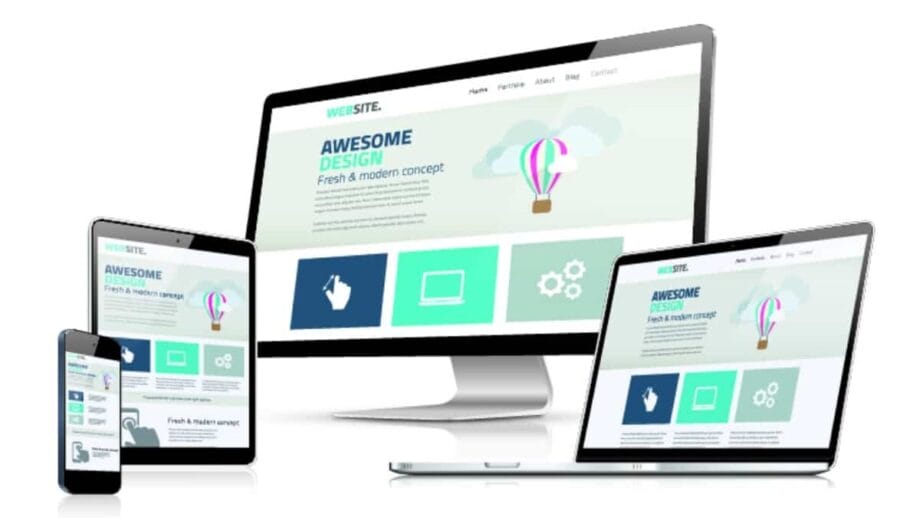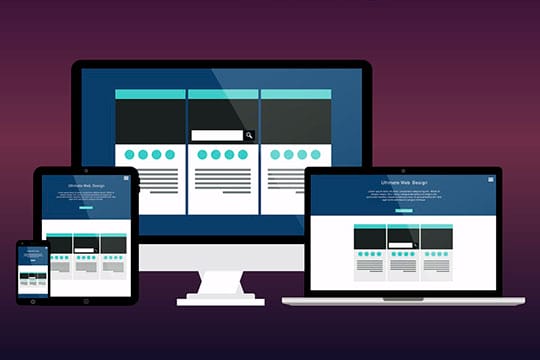Responsive web design is one of the key elements in the digital space due to the increasing number of individuals using internet-enabled devices such as smartphones, tablets, desktops, virtual desktops, among others, for businesses. This flexible approach towards web development makes sure that a single website adjusts its content and layout dynamically to provide a prime user experience regardless of the resolution or screen size of the device being used.
In the current scenario, consumers are diversifying between devices throughout their day; a non-responsive website leads to barriers for engagement and conversion opportunities. Incorporating responsive design is a basic requirement for accomplishing a strong, accessible online presence in the global marketplace, and not just for convenience.
What is Responsive Web Design?

Responsive web design is a method that focuses on creating flexible web pages that adjust to the user’s device dynamically. This adaptability is accomplished by the implementation of fluid grids that resize in real-time, CSS media queries that apply different layout styles based on detected screen size, and scalable images that maintain clarity across resolutions.
The primary aim of responsive design is to make sure that a consistent outlook across all devices is achieved while optimizing functionality and usability.
Apart from the traditional range of tablets, smartphones, and laptops, the responsive web design is increasingly utilized in virtual desktops, which presents an opportunity. Virtual desktops are accessed through several endpoint devices with differing screen sizes and resolutions are becoming increasingly common in business, thus creating a need for responsive web designs in business where utilization of virtual desktops is rising.
Key Principles of Responsive Design

- Fluid Grids: Responsive design utilizes fluid grids based on percentages rather than fixed-width layouts that are defined in pixels. This helps with the content columns and elements to scale comparatively as the size of the screen changes.
- Flexible Images and Media: Media such as videos and images are also designed so that they can be flexible in nature. This involves using relative units such as percentages to make sure that they scale down to fit in their containing elements. For images, methods such as responsive images allow for catering to varied image sizes or formats that are based on screen size and resolution.
- CSS Media Queries: The CSS feature called media queries is a powerful feature that allows for its application in different layouts based on the viewing device. These queries allow for the website to adapt its presentation rules as the viewport changes.
- Usability and User Experience: The focus is on maintaining consistency regarding usability and positive user experience across all types of devices, including virtual devices. This states that the text is readable, the content is logically organized, among others on. The goal is to make the website fit all different screens.
Benefits of Responsive Web Design

Responsive web design improves user experience by offering a consistent layout across all devices, leading to lower bounce rates and increased engagement. Additionally, it provides efficient SEO rankings as search engines like Google prefer websites that are mobile-friendly.
Moreover, it is cost-effective by eliminating the need to develop separate websites for different devices. Furthermore, responsive design reaches a wider consumer audience regardless of their device.
Similarly, the rise in need for virtual desktops has led to the preference for responsive web designs on these devices. A responsively designed website provides a consistent experience with traditional devices and within the window sizes of virtual desktops. This specifies that users accessing these services through virtual desktops are able to experience the same navigation, readable content, among others, as any user using a dedicated desktop or mobile device would experience.
Importance of Responsive Web Design in Business

Responsive web design is acting as a technological advantage, positioning itself as a vital component in the digital landscape for any business that is focusing on generating higher revenue across the globe. With the utilization of smartphones, the versatile tablet, and the traditional desktop and laptop computers are the major devices that are internet-enabled as well as utilized to conduct business.
The rising adoption of virtual desktop infrastructure (VDI) in professional environments, with differentiating window sizes and resolutions depending on the endpoint device employed, is contributing to the adoption rate of these web designs.
Responsive web design ensures readability and ease of navigation, amongst others. This adaptability is vital as high bounce rates; poor lead generation have a negative impact on SEO. In contrast, a well-designed responsive website improves the user experience, increases engagement, and develops higher conversion rates.
Conversely, a website that provides poor integration on the user’s device, leading them to zoom, pinch, and scroll to navigate the content, is expected to create poor engagement and thus lead to abandonment. High bounce rates signify lost engagement but also negatively impact a website’s search engine rankings.
However, a responsively designed website that offers a smooth experience across all devices results in user satisfaction, enhances conversion rates, among others.
Furthermore, in the context of search engine optimization (SEO), responsiveness has become a vital ranking factor on a global scale. Search engines are prioritizing websites that are mobile-friendly in their search results. This is due to their understanding of the high prevalence of individuals browsing on their mobile phones.
A website that is not able to meet these mobile-friendly criteria is expected to be penalized in search rankings. This leads to a reduction in organic visibility. By focusing on innovations in responsive design, businesses are able to cater to their existing mobile audience as well as the audience that utilizes devices apart than mobile phones.
Current Trends and Advancements in Responsive Web Design

The utilization of responsive web design in the mobile-first approach remains a vital component in the entire digital landscape, with designers focusing on developing experiences for smaller screens that are exceptional as the primary point of interaction.
Additionally, they are enhancing layouts and features for larger displays. Moreover, advanced CSS layout tools like Grid and Flexbox have become prevalent, allowing the creation of designs with greater efficiency.
Typography is gaining traction with several variety of fonts available that are offering dynamic adjustments for readability across distinct screen sizes. The inclusion of the dark mode support, which is led by user demand and is becoming a common feature, focuses on enhancing visual comfort.
The rise of Progressive Web Apps (PWAs) continues to dominate the responsive web design by providing features such as access to offline and push notifications. Artificial intelligence (AI) is steadily increasing its adoption by personalizing responsive experiences by analyzing user behavior to adjust content dynamically.
One of the ongoing trends that has a significant influence is the focus on performance optimization, particularly for mobile devices. Moreover, accessibility is expected to be an important consideration for further innovation due to a growing focus on inclusive design practices. These practices make sure that websites are usable by everyone, irrespective of their devices.
Future Prospects of Responsive Web Design in Business

The incorporation of voice user interface (VUI) along with responsive web designs is expected to become more prevalent. This will lead to responsive web designs adapting to voice commands and queries, increasing convenience and accessibility. This will provide a more sophisticated motion UI to improve user engagement across all screen sizes.
The focus on performance is expected to increase with responsive designs prioritizing efficient code, faster loading times, among others, to cater to mobile users. Studies indicate that a mere one-second delay in loading time can decrease conversion rates by up to 7%, highlighting the critical need for optimized mobile experiences.
Furthermore, accessibility is expected to be mandatory, with responsive design incorporating features that ensure usability for disabled individuals across all devices. The rise of foldable devices will require even more flexible and adaptive layouts.
Ultimately, the prospects of responsive web design in business are about developing personalized, accessible web experiences, among others, that smoothly cater to users on any device, anywhere in the world.
Conclusion

Responsive web design is driven by the growth of distinct internet-enabled devices, including the increasing adoption of virtual desktops, ensuring a consistent user experience across all screen sizes and resolutions. By utilizing key principles such as fluid grids, flexible media, and CSS media queries, responsive design overpowers the limitations of static layouts, preventing high bounce rates.
Its importance in convenience, as well as its direct impact on the SEO rankings, as search engines prioritize mobile-friendly websites, is growing. The cost-effectiveness of maintaining a single, adaptable website is further contributing to its high adoption rate.
Current trends emphasize mobile-first strategies, variable fonts, advanced CSS layout tools, amongst others, along with a strong focus on accessibility and performance. Over the next decade, the incorporation of voice user interfaces, along with the need to adapt to foldable devices, is expected to create new opportunities for responsive design.
Overall, its continued development is crucial for businesses to offer engaging and accessible online experiences is driving the rise in engagement and conversion rates in the digital landscape across the globe.






